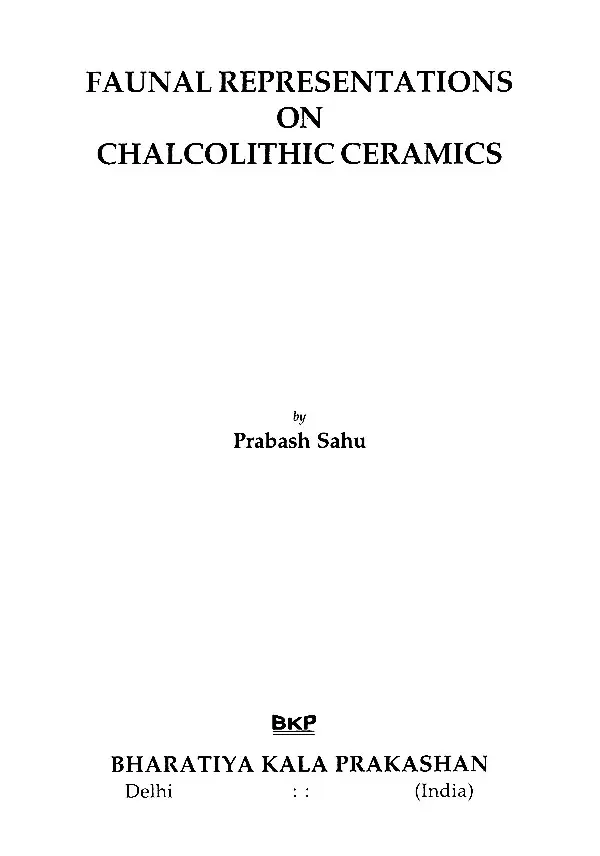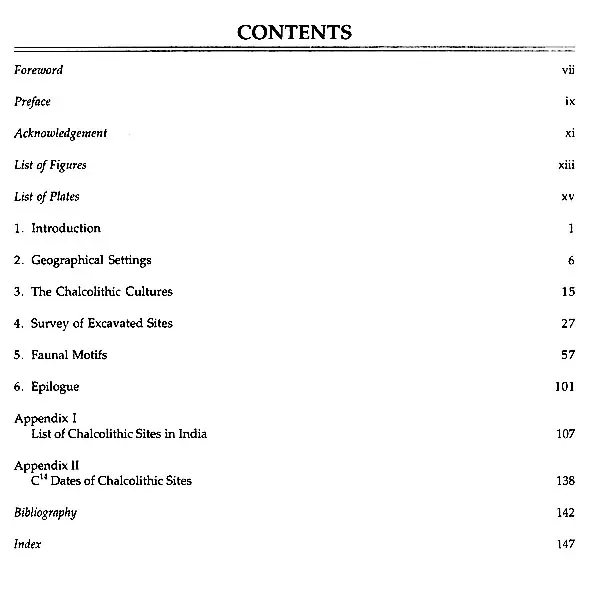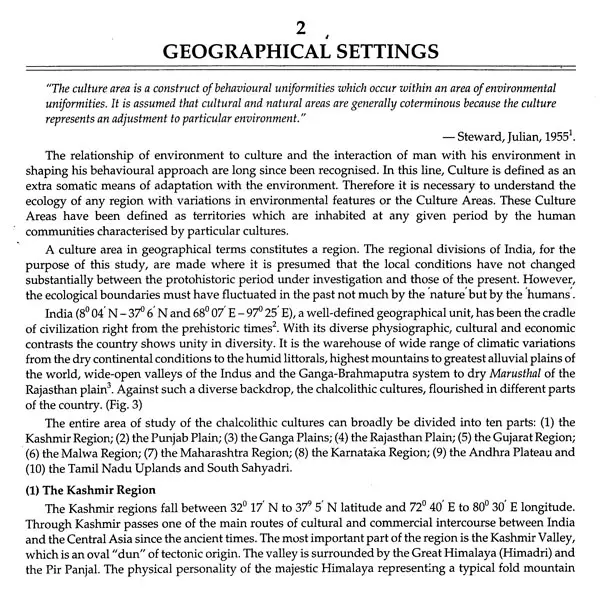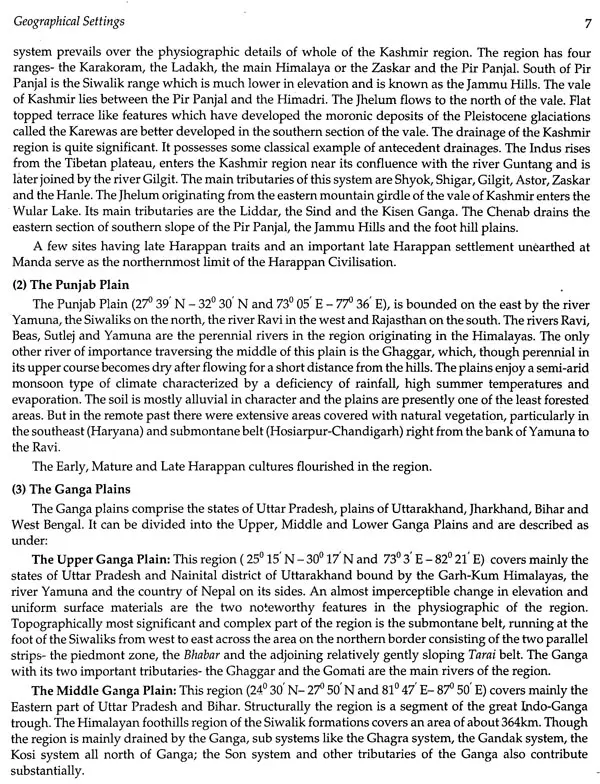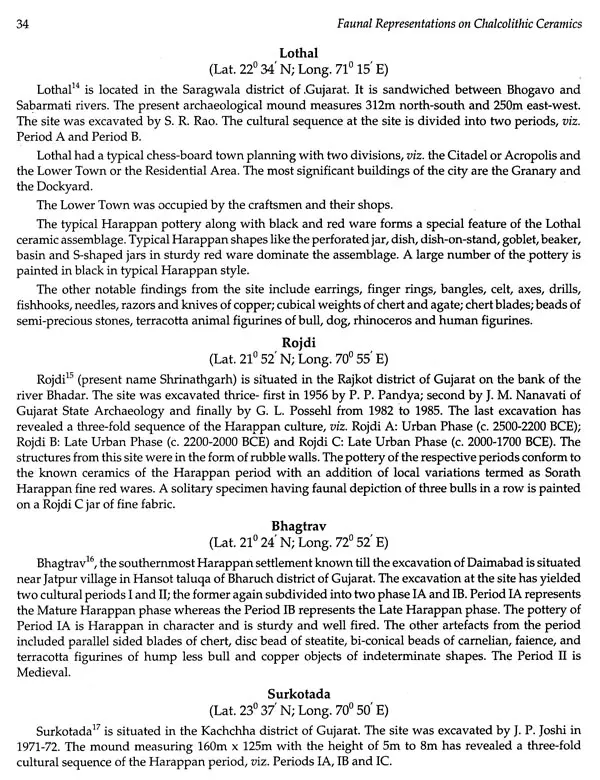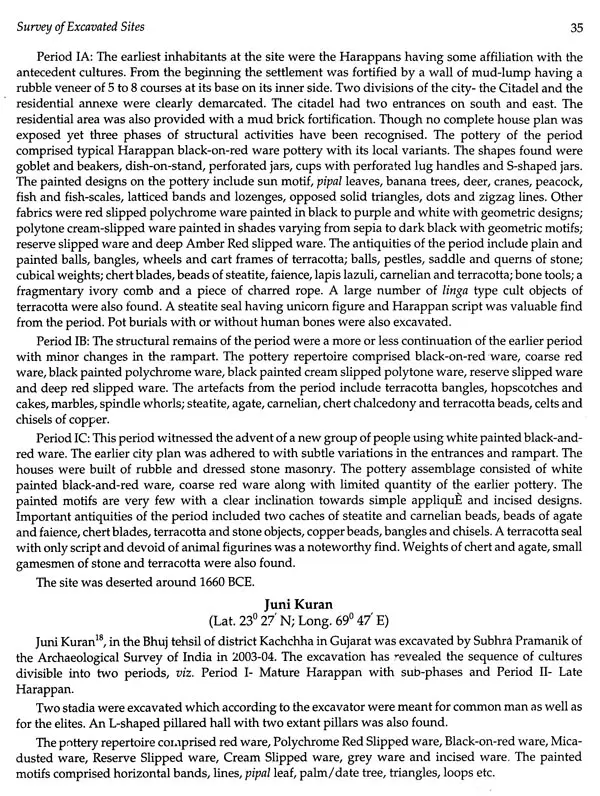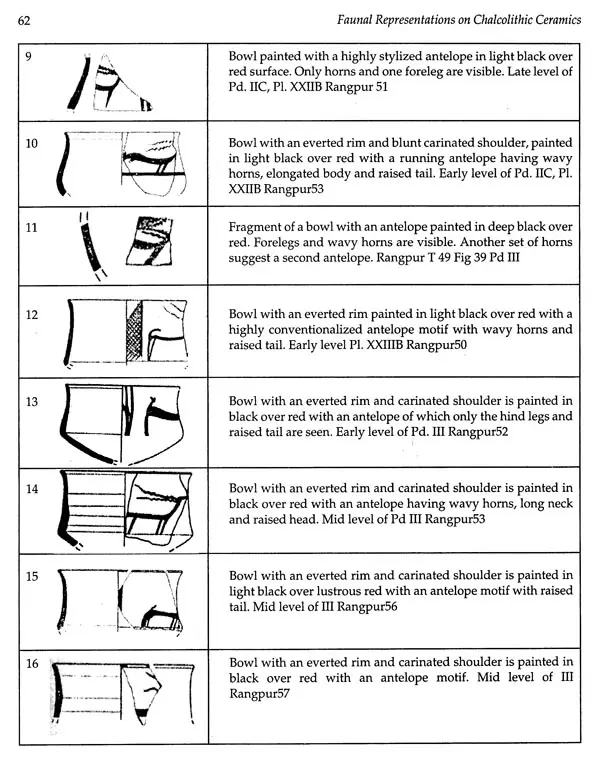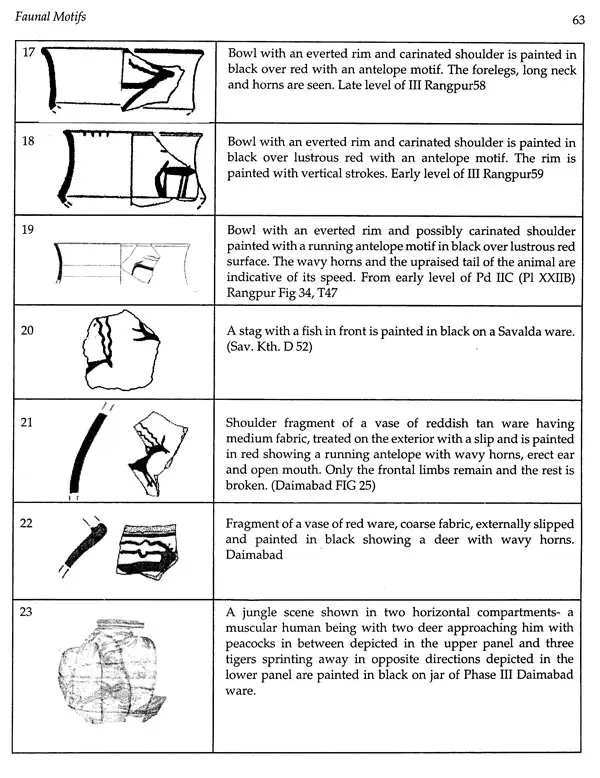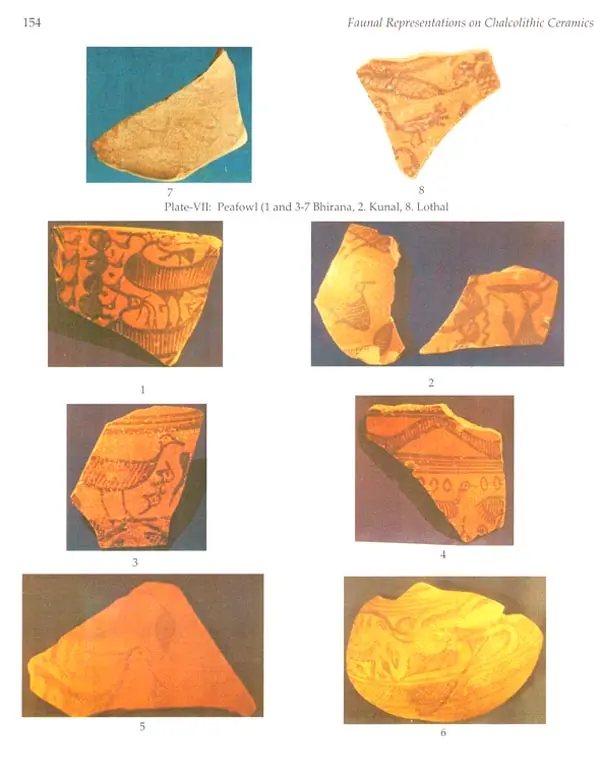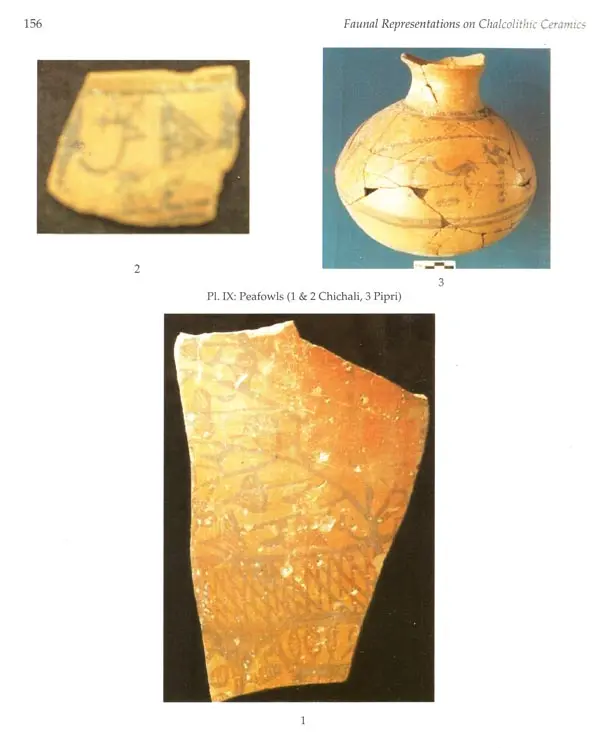
Faunal Representations on Chalcolithic Ceramics
Book Specification
| Item Code: | UAO158 |
| Author: | Prabash sahu |
| Publisher: | Bharatiya Kala Prakashan |
| Language: | English |
| Edition: | 2016 |
| ISBN: | 9788180903939 |
| Pages: | 172 (Throughout Color and B/w Illustrations) |
| Cover: | HARDCOVER |
| Other Details | 11.00 X 9.00 inch |
| Weight | 800 gm |
Book Description
The tradition of ceramic art standing the vicissitudes in its course. has withstood until today and is drawing great enthusiasm from the art lovers and critics alike. In the present thesis, the study of this art form among the chalcolithic cultures in India is made, under two broad categories: 'Urban Chalcolithic cultures represented mainly by the Mature Harappan culture including its predecessors like the Hakra Wares culture and the Early Harappan culture which led to the emergence of city-states and the succeeding degenerated Lafe Harappan culture and the Rural Chalcolithic cultures represented by the agrarian village settlements
The most important household object, across the cultures was pottery. Each culture had its own. distinct pottery tradition and style. The pottery painting customs continued unabatedly across the timeframe of various periods. The artistic marvel of the chalcolithic artist is reflected in the pottery paintings with an array of geometric, floral and faunal motifs. Among the other works of art mention may be made of the clay and terracotta figurines of animals, birds, reptiles etc. The paintings on the pottery were of varied themes ranging from simple geometrical patterns to complex floral and faunal motifs and narrations or story-telling The execution also varied from stylistic renditions to simplistic and naturalistic representations. The colour, usually in contrast to the surface of the medium, was selected to convey the underlying message. The paintings on the pottery with thematic values were not wanting during the chalcolithic period. The stories of the 'deer and the thirsty crow', 'the crow and the cunning fox later codified in the tales of Panchatantra, in fact had their origin during the Harappan period as these tales are painted beautifully on the pottery from Lothal and Bhirrana.
The author has dealt in depth about the findings from different Chalcolithic culture sites in the Indian scenario and the extensive research has brought forth an interesting reading and study subject. The comparison between various forms of artistic representations in two and three dimensions present a rare type of study about the Chalcolithic art in various media.
Dr Prabash Sahu was bom in Odisha on 3 of July 1968. After completing his Post Graduation in Ancient Indian History, with specialisation in Archaeology from the Department of History, University of Sambalpur, Odisha, he did the Post Graduate Diploma in Archaeology from the Institute of Archaeology Archaeological Survey of India, New Delhi On having joined the Archaeological Survey of India, he was posted initially to the Archaeological Museum, Halebidu, Kamataka and later to the Excavation Branch 1, Nagpur. Being fortunate to be posted here, Dr Sahu enriched his already impressive list of archaeological field works further and by using maximum of the rich archaeological library at Nagpur, completed his PhD from the Rashtrasant Tukdoji Maharaj Nagpur University.
After having served for sixteen long years in the Archaeological Survey of India, Dr Prabash Sahu joined the Department of Ancient Indian History, Culture and Archaeology, Rashtrasant Tukdoji Maharaj Nagpur University, Nagpur as an Associate Professor in October 2013.
Dr Prabash Sahu who is an avid student of archaeology, having a very rich experience of at least a dozen excavation and archaeological field investigations is an active member of esteemed organisations like the IAS, SOSA, RASI and has published more than one score papers in various national and international publications.
He has also made valuable presentations in various seminars and workshops.
In the history of the mankind, the chalcolithic period occupies a unique place as it heralds the dawn of a fully settled life with surplus food production, domestication of animals and the required time to pursue their favourite pastimes. The chalcolithic cultures in India have been dealt with in this book under two pragmatically convenient heads- urban and post-urban or rural. The urban chalcolithic culture is represented by the Bronze Age Harappan culture including its antecedents the Hakra Wares culture, the Early Harappan (previously called as Pre Harappan), the Early Mature Harappan witnessing the incipient urbanism, the Mature Harappan and the Late Harappan culture which witnessed the decadent phase of the urban culture. The post urban or rural chalcolithic cultures being heterogeneous in nature are studied on the basis of chronology with an eye to their manifestations in different ecological zones. These cultures remained confined to defined geographical boundaries with more or less no connection to the surviving other chalcolithic cultures in the near vicinity. Of course, there are certain exceptions where there is evidence of give and take as in the case of the interaction between the Ahar culture and the Harappans. Some of the rural chalcolithic cultures like the Savalda, Kayatha, Ahar and Malwa cultures are partly contemporaneous to the late Harappans albeit with entirely different diagnostic cultural repertoire. The Jorwe culture is a totally different entity just preceding the herald of the Iron Age in India. However, all the chalcolithic cultures, irrespective of their provenance or chronology have shown one common characteristic, ie. the love for the art in various manifestations and the paintings on the pottery stands out as the most prominent one. The ceramics of all the cultures are beautifully painted with different themes and motifs in different colours bringing into fore the aesthetic taste and idealistic subtleties of the chalcolithic folks.
The study of the faunal motifs on the chalcolithic pottery has been made by dividing them into six chapters.
The study of the faunal motifs on the chalcolithic pottery has been made by dividing them into six The chapter I deals with an overall introduction to the chalcolithic cultures with the entire settlement patterns within a given ecological framework. The main theme of the topic is touched upon to emphasize their role in interpreting many aspects of the bygone societies.
The chapter II is entirely devoted to the geographical settings where the chalcolithic cultures flourished. The Indian region is divided into various physiographic zones to facilitate further studies where different chalcolithic cultures grew up from nascent stage to full-fledged maturity and ultimate decline. These geographical zones have proved to be of vital importance in shaping up the chalcolithic cultures.
Since the development of archaeology as a scientific discipline to unravel the mysteries of the past has come to fore, many chalcolithic cultures have been brought under the spade. The chapter III delves into the chalcolithic cultures prevalent in India. In this chapter, the chalcolithic cultures in India have been grouped into two categories: Urban and Rural.
The mainstream of Indian Civilization in diverse stretches had astonishing projections of an urban cast in the Harappan age. It reached a level of substantial growth in fields of institutional arrangements, ecology and social mobility. For the delineation of this secular phase an obviously more explicit reappraisal method has been adopted in the present work dovetailing the archaeological and artistic material to substantiate the systematic analysis of urban growth and development of taste and tradition in ceramics during the chalcolithic times.
Divided into six chapters the faunal motifs as contained mainly on pottery have been analysed under the categories of urban chalcolithic and rural chalcolithic cultures. The first one basically represents the Mature Harappan with glimpses of pre and early Harappan and the second one as concerned with agrarian village settlements. The author has discussed and traced origins of many motifs with their developmental stages from Hakra and Kot Dijian periods to the Mature Harappan and later phases as explicit in different recognized fabrics of ceramics. The author has also been able to connect the style of representation of faunal evidence in various chalcolithic cultures, Particularly of Deccan and Central India. Such representations also reflect their role in socio-economic and religious life of chalcolithic folk. Some such representations also depict the artistic bent of mind of the creators. It is also significant to note that some of the stories contained in Sanskrit and Prakrit literature of later times had their chalcolithic Origin as their themes are depicted on ceramics, very much in the bold and elegant manner. I must give credit to the scholar for authoring a book which would give Opportunity to researchers to go into further depth and which would be equally interesting to read for a lay reader.
Ever since man began to spread his wings and take flights in the horizons of colourful and fanciful thoughts, he began to feel the need of a medium through which he could give his ideas a plastic form- a shape. Soon he came across one such medium- something, which lay scattered around him, something, which he could get in abundance, something on which he could open out the pages of his mind. It was the Mother Earth- the cheapest and viable medium, which took the form of plastic art catering to his needs. Thus was born the "Terracotta Art." Pottery making was the first form of the terracotta art, which besides catering to his utilitarian functionalities, served to satisfy the creative impulse, as much for aesthetic expression and ritualistic needs.
The pottery painting has a long and chequered history right from the Neolithic period when man first discovered the wheel and started manufacturing pottery as early as 7 millennium BCE. This art, standing the vicissitudes in its course, has withstood until today and is drawing great enthusiasm from the art lovers and critics alike. In its long history, there had been periods of recession, when it underwent a dull and dim tenure. For example, the art got a hind seat during the Early Historical period following immediate to the post-urban chalcolithic periods. During the medieval period, the art was further revived.
The excavation at Mohenjodaro and Harappa in the 20 of the twentieth century opened a new vista in bridging the hiatus between the Stone Age and the Iron Age in the Indian subcontinent. These excavations not only brought to light the remains of the first urbanisation in the subcontinent but also pushed back the antiquity of the Indian civilisation to the 3 millennium BCE. Since then a lot of research has been undertaken by various scholars to study the Harappan culture. This culture is variously termed as Indus Valley Civilisation', 'Harappan Culture or most recently as 'Indus-Saraswati Culture'. This culture was wide spread and the extent of this empire was sprawling over an area of 15 million sq. Km. On Indian soil, the maximum concentration of the culture is in the state of Haryana (350 sites), followed by Gujarat (230 sites), Punjab (147 sites), Uttar Pradesh (133 sites), Rajasthan (75 sites), Chandigarh (4) sites), Himachal Pradesh (3 sites) and Jammu (1 site) (fig. I and also please see Annexure 1). The present researches show that the Harappan culture was not a homogenous and rigid 'empire' as it was thought to be. But, in fact, there were many regional variations which are discernible in different ecological zones. But the most striking similarity among all the sites excavated so far show their uniqueness in the ceramic industry. The paintings executed on the pottery of daily use show resemblance to each other so far as their renditions and the underlying motives behind the painted motifs are concerned.
Book's Contents and Sample Pages
